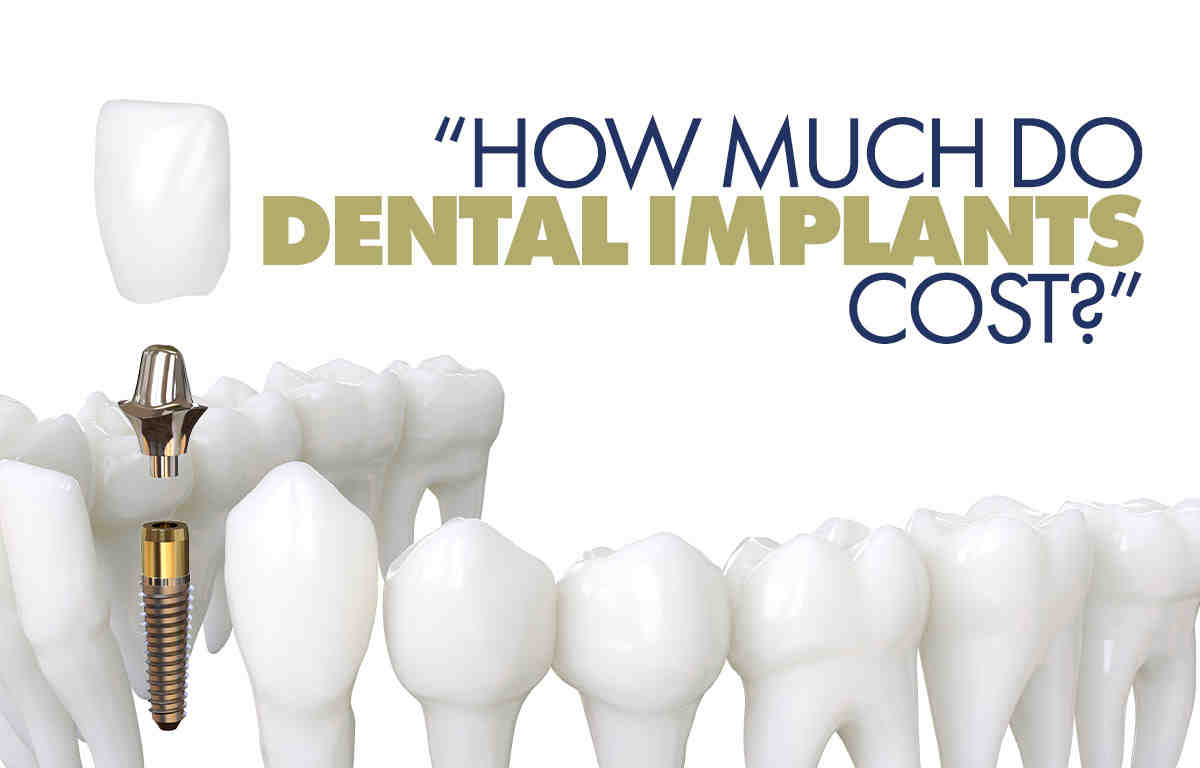Contents
- 1 Introduction
- 2 Understanding Dental Implants
- 3 Overview of Dental Insurance Coverage
- 4 Factors Influencing Insurance Coverage for Dental Implants
- 5 Strategies for Maximizing Insurance Coverage
- 6 Alternative Financing Options for Dental Implants
- 7 Advocacy and Appeals Process
- 8 Tips for Choosing the Right Insurance Plan
- 9 Case Studies and Examples
- 10 Conclusion
Introduction
The quest for dental implants represents a significant step towards restoring oral health, enhancing dental function, and revitalizing self-confidence for individuals facing tooth loss or damage. However, navigating the landscape of insurance coverage for dental implants presents a multifaceted challenge, often fraught with complexities and uncertainties. In this comprehensive guide, we embark on a journey to demystify the process of securing insurance coverage for dental implants, empowering individuals with the knowledge, strategies, and resources necessary to navigate this intricate terrain effectively.
Dental Implants: A Path to Restoration
Dental implants stand as a modern marvel of dental technology, offering a durable, natural-looking solution to tooth loss and functional impairment. By mimicking the structure and function of natural teeth, implants provide a stable foundation for prosthetic restorations, enabling individuals to regain the ability to chew, speak, and smile with confidence. As a transformative treatment modality, dental implants not only enhance oral health but also contribute to overall well-being and quality of life.
The Imperative of Insurance Coverage
While the benefits of dental implants are indisputable, the financial considerations associated with treatment can pose significant barriers for individuals seeking restoration. Insurance coverage for dental implants plays a pivotal role in mitigating the financial burden and facilitating access to essential dental care. However, the landscape of insurance coverage for dental implants is characterized by nuances, limitations, and policy exclusions that necessitate careful navigation and informed decision-making.
Challenges and Complexities
Securing insurance coverage for dental implants presents a myriad of challenges, ranging from policy limitations and exclusions to pre-existing conditions and procedural requirements. The complexity of insurance reimbursement processes, coupled with variations in coverage policies among providers, further compounds the challenge of accessing affordable dental implant treatment. In the face of these challenges, individuals must navigate the intricacies of insurance coverage with diligence, advocacy, and strategic planning.
Through this comprehensive guide, we embark on a journey to unravel the mysteries of dental implant insurance coverage, equipping individuals with the insights, strategies, and resources necessary to navigate the complexities of insurance reimbursement effectively. By empowering individuals to advocate for their oral health needs and navigate the intricacies of insurance coverage, we aim to foster a future where dental implants are accessible and affordable for all who stand to benefit from this transformative treatment modality.
Understanding Dental Implants
In delving into the realm of dental implants, it becomes imperative to grasp the intricacies of this transformative dental procedure. This section aims to elucidate the fundamental aspects of dental implants, including their benefits, procedural variations, and associated cost considerations.
Dental Implants: A Definitive Solution
At its core, a dental implant serves as a sturdy foundation for prosthetic restorations, such as crowns, bridges, or dentures, designed to replace missing or damaged teeth. Unlike traditional dental prosthetics, which rely on adjacent teeth for support, implants are surgically embedded into the jawbone, providing unparalleled stability and functionality. This permanence and stability make dental implants a preferred choice for individuals seeking long-term solutions to tooth loss and oral health restoration.
Types of Dental Implant Procedures
The realm of dental implant procedures encompasses a spectrum of options tailored to meet diverse patient needs and treatment objectives. From single-tooth implants targeting isolated tooth loss to full-arch implants addressing extensive dental deficiencies, the versatility of dental implantology enables tailored treatment plans that optimize outcomes and patient satisfaction. Moreover, advancements in implant materials, surgical techniques, and prosthetic design contribute to enhanced aesthetics, functionality, and longevity of dental implant restorations.
Cost Considerations for Dental Implants
While the benefits of dental implants are undeniable, the cost of treatment can pose a significant barrier for individuals seeking oral rehabilitation. The total cost of dental implant treatment encompasses various factors, including surgical fees, implant materials, prosthetic components, and ancillary services such as diagnostic imaging and post-operative care. Additionally, geographic location, provider expertise, and patient-specific factors may influence treatment costs, further complicating the financial landscape of dental implantology.
By understanding the fundamental principles of dental implants, individuals are better equipped to make informed decisions regarding their oral health and treatment options. Armed with knowledge of the benefits, procedural variations, and cost considerations associated with dental implants, patients can engage in meaningful discussions with their dental providers, explore treatment alternatives, and embark on a journey towards comprehensive oral rehabilitation with confidence and clarity.

Overview of Dental Insurance Coverage
In navigating the realm of dental implants, understanding the nuances of dental insurance coverage is paramount. This section provides an insightful overview of dental insurance policies, coverage limitations, and common exclusions pertinent to dental implant procedures.
Understanding Dental Insurance Policies
Dental insurance policies vary widely in terms of coverage scope, limitations, and reimbursement structures. While some policies offer comprehensive coverage for preventive, restorative, and surgical dental procedures, others may impose restrictions or exclusions on certain treatment modalities, including dental implants. Understanding the specifics of one’s dental insurance policy is essential for informed decision-making and effective utilization of benefits.
Common Exclusions Related to Dental Implants
Dental insurance policies commonly exclude coverage for elective or cosmetic procedures, which may include dental implants in some cases. Additionally, policies may impose waiting periods, annual maximums, or pre-authorization requirements for coverage of certain dental services, further complicating access to dental implant treatment. By familiarizing oneself with policy exclusions and limitations, individuals can proactively explore alternative financing options or advocate for expanded coverage through supplemental insurance plans.
Importance of Reviewing Insurance Policy Details
Given the complexities of dental insurance coverage, reviewing policy details and understanding coverage terms are critical steps in maximizing insurance benefits and minimizing out-of-pocket expenses. Individuals should carefully review their insurance policy documents, paying close attention to coverage provisions, exclusions, deductibles, and co-payment requirements. Additionally, consulting with insurance representatives or dental professionals can provide clarity on coverage questions and assist in navigating the reimbursement process effectively.
By gaining insight into the landscape of dental insurance coverage, individuals can make informed decisions regarding their oral health care and treatment options. By leveraging insurance benefits effectively, advocating for expanded coverage when warranted, and exploring alternative financing options as needed, individuals can optimize their access to essential dental services, including dental implant treatment, and embark on a path towards comprehensive oral health and well-being.

Factors Influencing Insurance Coverage for Dental Implants
Navigating insurance coverage for dental implants entails grappling with a multitude of factors that influence reimbursement eligibility and benefit utilization. This section delves into the key considerations that shape insurance coverage for dental implants, shedding light on pre-existing conditions, policy limitations, and distinctions between medically necessary and cosmetic procedures.
Pre-existing Conditions and Dental History
Insurance coverage for dental implants may be influenced by pre-existing dental conditions, such as periodontal disease, bone loss, or prior tooth extractions. Individuals with a history of oral health issues or extensive dental treatment may encounter challenges in securing insurance coverage for dental implants, as insurers may view these factors as risk factors for treatment complications or implant failure. Understanding how pre-existing conditions impact insurance coverage is essential for managing expectations and exploring alternative financing options.
Policy Limitations and Exclusions
Dental insurance policies commonly impose limitations or exclusions on coverage for certain dental procedures, including dental implants. Exclusions may be based on the perceived cosmetic nature of dental implant treatment or limitations on coverage for elective or non-essential services. Individuals should carefully review their insurance policy documents to ascertain coverage provisions, exclusions, and limitations related to dental implant treatment, allowing them to make informed decisions regarding treatment options and financial planning.
Coverage for Medically Necessary Procedures vs. Cosmetic Procedures
Insurance coverage for dental implants may vary depending on whether the procedure is deemed medically necessary or cosmetic in nature. While insurance policies typically provide coverage for medically necessary procedures aimed at restoring oral health and function, coverage for cosmetic procedures, such as implant-supported smile makeovers, may be limited or excluded altogether. Distinguishing between medically necessary and cosmetic procedures is essential for understanding insurance coverage options and exploring alternative financing strategies.
By considering the interplay of pre-existing conditions, policy limitations, and procedural distinctions, individuals can navigate the complexities of insurance coverage for dental implants with clarity and foresight. By advocating for expanded coverage when warranted, exploring alternative financing options, and maintaining open communication with insurance providers and dental professionals, individuals can optimize their access to essential dental services and embark on a path towards comprehensive oral health and well-being.
Strategies for Maximizing Insurance Coverage
In the pursuit of securing insurance coverage for dental implants, employing effective strategies is essential to optimize reimbursement eligibility and minimize out-of-pocket expenses. This section outlines strategic approaches for maximizing insurance coverage for dental implants, encompassing pre-authorization requirements, communication with insurance providers, and exploration of supplemental insurance options.
Many dental insurance policies require pre-authorization or pre-approval for coverage of dental implant procedures. This involves submitting comprehensive treatment plans, diagnostic records, and justification for the medical necessity of implant treatment to insurance providers for review. By adhering to pre-authorization requirements and providing thorough documentation, individuals enhance their chances of securing insurance coverage for dental implants and minimizing claim denials or delays.
Communication with Insurance Providers and Dental Professionals
Effective communication with insurance providers and dental professionals is integral to navigating the insurance reimbursement process successfully. Individuals should proactively engage with insurance representatives to clarify coverage provisions, inquire about pre-authorization requirements, and address any coverage-related concerns or questions. Additionally, collaborating closely with dental professionals allows individuals to advocate for expanded coverage, explore alternative treatment options, and optimize treatment planning to align with insurance benefits.
Exploring Supplemental Insurance Options
In cases where primary dental insurance coverage falls short of meeting the full cost of dental implant treatment, individuals may explore supplemental insurance options to bridge the coverage gap. Supplemental insurance plans, such as dental discount plans or indemnity insurance policies, may offer additional benefits or reimbursement for dental implant procedures not covered by primary insurance. By researching and comparing supplemental insurance options, individuals can identify cost-effective solutions to augment their existing coverage and mitigate financial barriers to dental implant treatment.
By implementing proactive strategies for maximizing insurance coverage, individuals can navigate the complexities of dental implant reimbursement with confidence and clarity. Through diligent adherence to pre-authorization requirements, effective communication with insurance providers and dental professionals, and exploration of supplemental insurance options, individuals can optimize their access to essential dental services and embark on a path towards comprehensive oral health and well-being.
Alternative Financing Options for Dental Implants
In instances where insurance coverage falls short of fully offsetting the cost of dental implant treatment, exploring alternative financing options becomes imperative to bridge the financial gap and ensure access to essential dental care. This section explores alternative financing avenues for dental implants, encompassing flexible spending accounts (FSAs), payment plans offered by dental offices, and financing options through third-party lenders.
Flexible Spending Accounts (FSAs) and Health Savings Accounts (HSAs)
Flexible spending accounts (FSAs) and health savings accounts (HSAs) represent tax-advantaged financial tools that allow individuals to set aside pre-tax funds for qualified medical expenses, including dental implant treatment. By contributing to FSAs or HSAs through payroll deductions, individuals can allocate funds towards dental implant procedures while benefiting from tax savings on eligible expenses. Leveraging FSAs or HSAs enables individuals to finance dental implant treatment with pre-tax dollars, reducing their out-of-pocket expenses and maximizing their available financial resources.
Payment Plans Offered by Dental Offices
Many dental offices offer flexible payment plans or financing options to accommodate patients’ budgetary constraints and facilitate access to dental implant treatment. Payment plans typically involve spreading the cost of treatment over an extended period, with fixed monthly payments or interest-free financing options. By collaborating with dental providers to establish customized payment arrangements, individuals can manage the financial impact of dental implant treatment more effectively and proceed with treatment without undue financial strain.
Financing Options Through Third-Party Lenders
Third-party financing companies specialize in providing healthcare financing solutions, including loans and credit lines tailored to cover medical and dental expenses, such as dental implant treatment. These lenders offer flexible repayment terms, competitive interest rates, and streamlined application processes to facilitate access to financing for dental care. By exploring financing options through reputable third-party lenders, individuals can secure the necessary funds for dental implant treatment and embark on their journey towards comprehensive oral rehabilitation with confidence and peace of mind.
By leveraging alternative financing options for dental implants, individuals can overcome financial barriers to treatment and access essential dental care without delay. Through strategic utilization of flexible spending accounts (FSAs) and health savings accounts (HSAs), collaboration with dental providers to establish payment plans, and exploration of financing options through third-party lenders, individuals can navigate the financial landscape of dental implant treatment effectively and embark on a path towards restored oral health and enhanced quality of life.
Advocacy and Appeals Process
In the pursuit of securing insurance coverage for dental implants, individuals may encounter denials or limitations on coverage from insurance providers. Understanding the advocacy and appeals process is essential for navigating insurance disputes effectively and advocating for expanded coverage. This section outlines the steps involved in the advocacy and appeals process, including understanding the appeals process, gathering documentation, and seeking assistance from patient advocacy organizations.
Understanding the Appeals Process for Denied Claims
When faced with a denial of insurance coverage for dental implant treatment, individuals have the right to appeal the decision through the insurance provider’s appeals process. The appeals process typically involves submitting a formal appeal letter detailing the reasons for challenging the denial, along with supporting documentation and evidence to substantiate the medical necessity of the treatment. Understanding the specific procedures and timelines for appeals outlined by the insurance provider is crucial for initiating the appeals process promptly and effectively.
Documentation and Evidence Gathering for Appeals
Gathering comprehensive documentation and evidence to support the appeal is critical for presenting a compelling case for insurance coverage. This may include medical records, treatment plans, diagnostic imaging, and letters of medical necessity from dental professionals attesting to the need for dental implant treatment to restore oral health and function. By compiling a thorough and compelling appeal packet, individuals increase their chances of success in overturning the denial and securing insurance coverage for dental implants.
Seeking Assistance from Patient Advocacy Organizations
In cases where individuals encounter challenges navigating the appeals process independently, seeking assistance from patient advocacy organizations or legal experts specializing in healthcare advocacy may be beneficial. These organizations provide guidance, support, and advocacy services to individuals navigating insurance disputes and appeals, helping to navigate complex insurance regulations and advocate for expanded coverage on behalf of patients. By leveraging the expertise and resources offered by patient advocacy organizations, individuals can effectively navigate insurance disputes and secure the coverage they need for essential dental implant treatment.
By understanding the advocacy and appeals process, gathering comprehensive documentation, and seeking assistance from patient advocacy organizations when needed, individuals can effectively navigate insurance disputes and advocate for expanded coverage for dental implant treatment. Through persistence, diligence, and informed advocacy, individuals can overcome insurance challenges and access the dental care they need to restore oral health and enhance their quality of life.
Tips for Choosing the Right Insurance Plan
Selecting the appropriate dental insurance plan is a crucial step in securing comprehensive coverage for dental implant treatment. This section offers valuable tips and considerations to guide individuals in choosing the right insurance plan, encompassing research, comparison, and long-term planning.
Researching Dental Insurance Providers and Plans
Conducting thorough research on dental insurance providers and available plans is essential for informed decision-making. Individuals should explore the coverage options offered by different insurance providers, comparing plan features, premiums, coverage limits, and network providers. Additionally, assessing customer reviews, ratings, and satisfaction levels can provide insights into the quality of service and reliability of insurance providers, helping individuals make informed choices that align with their dental care needs.
Comparing Coverage Options and Premiums
When evaluating dental insurance plans, individuals should carefully assess coverage options and premiums to determine the most cost-effective and comprehensive coverage for dental implant treatment. Comparing coverage provisions, including benefits for preventive, restorative, and surgical dental procedures, allows individuals to identify plans that offer the best value and coverage flexibility. Additionally, evaluating premium costs and out-of-pocket expenses, such as deductibles, co-payments, and annual maximums, enables individuals to assess the overall affordability of insurance plans and budget accordingly.
Considering Long-Term Dental Care Needs
Anticipating long-term dental care needs and treatment goals is essential when selecting a dental insurance plan. Individuals should assess their oral health history, existing dental conditions, and potential future treatment needs, such as preventive care, restorative procedures, and specialty services. Choosing a dental insurance plan that provides comprehensive coverage for a range of dental services, including dental implant treatment, ensures continuity of care and financial protection against unforeseen dental expenses in the future.
By researching dental insurance providers and plans, comparing coverage options and premiums, and considering long-term dental care needs, individuals can make informed decisions when selecting the right insurance plan for comprehensive coverage of dental implant treatment. By aligning insurance coverage with their dental care needs and treatment objectives, individuals can safeguard their oral health and access essential dental services with confidence and peace of mind.
Case Studies and Examples
Examining real-world case studies and examples of successful insurance coverage for dental implants provides valuable insights into the strategies and outcomes of securing insurance reimbursement for dental implant treatment. This section presents a selection of case studies and examples, highlighting diverse scenarios, challenges encountered, and strategies employed to navigate insurance coverage effectively.
Real-life Examples of Successful Insurance Coverage for Dental Implants
This subsection features real-life examples of individuals who successfully secured insurance coverage for dental implant treatment. These case studies illustrate a variety of scenarios, including individuals with pre-existing dental conditions, complex treatment needs, and challenging insurance situations. By exploring the experiences of individuals who navigated insurance coverage successfully, readers gain insights into effective strategies, advocacy approaches, and potential outcomes in securing insurance reimbursement for dental implants.
Challenges Encountered and Strategies Employed
Each case study highlights unique challenges encountered during the insurance reimbursement process and the strategies employed to overcome obstacles and secure coverage. Challenges may include policy limitations, pre-authorization requirements, claim denials, and appeals processes. By examining the strategies employed by individuals to navigate insurance challenges effectively, readers gain practical insights and actionable recommendations for advocating for expanded coverage and maximizing insurance benefits for dental implant treatment.
Drawing lessons from real-life case studies and examples, this subsection distills best practices and recommendations for navigating insurance coverage for dental implants successfully. Lessons learned may include the importance of thorough documentation, proactive communication with insurance providers, and persistence in advocating for expanded coverage. By synthesizing the experiences of individuals who successfully secured insurance reimbursement for dental implant treatment, readers gain practical guidance and actionable strategies for navigating insurance challenges effectively.
By engaging with real-life case studies and examples of successful insurance coverage for dental implants, individuals gain valuable insights into the complexities of insurance reimbursement and the strategies employed to navigate insurance challenges effectively. By leveraging the experiences and lessons learned from real-life examples, individuals can advocate for expanded coverage, maximize insurance benefits, and access essential dental services with confidence and clarity.
Conclusion
As we conclude our exploration of securing insurance coverage for dental implants, it is evident that navigating the complexities of insurance reimbursement requires diligence, advocacy, and informed decision-making. Throughout this guide, we have delved into the fundamental aspects of dental implants, insurance coverage considerations, and strategies for maximizing insurance benefits.
Summary of Key Points
Our journey has underscored the importance of understanding dental implant procedures, insurance coverage limitations, and alternative financing options. We have explored factors influencing insurance coverage, advocacy strategies, and real-life examples of successful insurance reimbursement for dental implant treatment. By synthesizing these insights, readers have gained a comprehensive understanding of the challenges and opportunities inherent in securing insurance coverage for dental implants.
Empowerment Through Knowledge and Advocacy
Armed with knowledge and insights gleaned from this guide, individuals are empowered to advocate for their oral health needs, navigate insurance challenges effectively, and access essential dental services with confidence and clarity. By leveraging strategies for maximizing insurance coverage, exploring alternative financing options, and learning from real-life examples, individuals can overcome obstacles and pursue comprehensive oral rehabilitation with determination and resilience.
Looking Ahead
As the landscape of dental care continues to evolve, the principles of advocacy, empowerment, and informed decision-making remain essential in navigating the complexities of insurance reimbursement for dental implants. By embracing these principles and advocating for expanded coverage, individuals contribute to the advancement of dental health equity and access to essential dental services for all.
In closing, we extend our appreciation for embarking on this journey of exploration and discovery. May the insights and strategies shared in this guide serve as valuable resources in your pursuit of securing insurance coverage for dental implants, and may you embark on a path towards restored oral health and enhanced well-being with confidence and determination.



